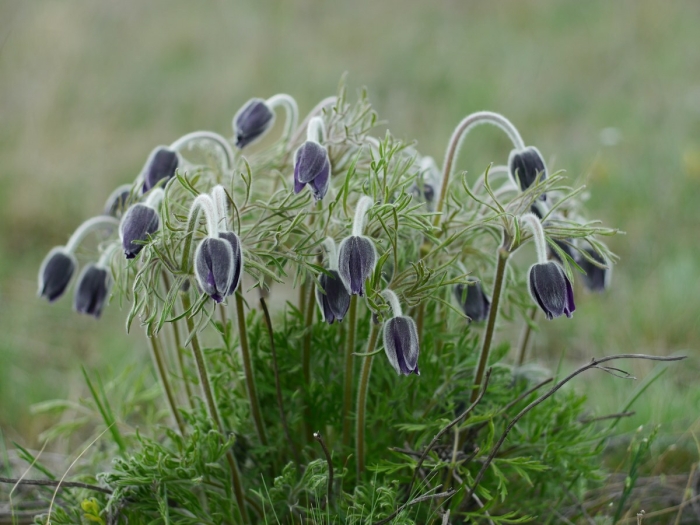Small Pasque Flower
(Pulsatilla pratensis)
Small Pasque Flower (Pulsatilla pratensis)
/
/

Roman
CC BY 4.0
Image By:
Roman
Recorded By:
Copyright:
CC BY 4.0
Copyright Notice:
Photo by: Roman | License Type: CC BY 4.0 | License URL: http://creativecommons.org/licenses/by/4.0/ | Rights Holder: Roman | Publisher: iNaturalist | Date Created: 2024-04-06T16:57Z |

























Estimated Native Range
Summary
Pulsatilla pratensis, commonly known as Small Pasque Flower, Easter Flower, or Meadow Anemone, is a perennial herb native to calcareous grasslands, steppes, and sparse woodlands of Europe and Western Asia. It has a moderate growth rate and typically reaches a height and width of 0.5-1 feet (0.15-0.3 meters). This plant is characterized by its bell-shaped, purple or blue flowers that bloom in early spring, often around Easter, which is how it earned some of its common names. The flowers are quite showy and are followed by distinctive, feathery seed heads. The foliage is finely dissected, giving it a fern-like appearance.
Small Pasque Flower is valued for its early spring blooms and is often used in rock gardens, borders, and wildflower meadows. It is relatively low-maintenance, requiring minimal care once established. It thrives in full sun to part shade and prefers well-drained soils such as clay, loam, or sandy types. While it tolerates a range of soil pH, it has a particular affinity for alkaline conditions. Overwatering or poorly drained soils can lead to root rot, so it is important to avoid these conditions. Pulsatilla pratensis is also used in traditional medicine, particularly in homeopathy, although all parts of the plant are toxic if ingested.CC BY-SA 4.0
Small Pasque Flower is valued for its early spring blooms and is often used in rock gardens, borders, and wildflower meadows. It is relatively low-maintenance, requiring minimal care once established. It thrives in full sun to part shade and prefers well-drained soils such as clay, loam, or sandy types. While it tolerates a range of soil pH, it has a particular affinity for alkaline conditions. Overwatering or poorly drained soils can lead to root rot, so it is important to avoid these conditions. Pulsatilla pratensis is also used in traditional medicine, particularly in homeopathy, although all parts of the plant are toxic if ingested.CC BY-SA 4.0
Plant Description
- Plant Type: Herb
- Height: 0.5-1 feet
- Width: 0.5-1 feet
- Growth Rate: Moderate
- Flower Color: Purple, Blue
- Flowering Season: Spring
- Leaf Retention: Deciduous
Growth Requirements
- Sun: Full Sun, Part Shade
- Water: Low, Medium
- Drainage: Medium, Fast
Common Uses
Bee Garden, Border Plant, Butterfly Garden, Low Maintenance, Rock Garden
Natural Habitat
Calcareous grasslands, steppes, and sparse woodlands
Other Names
Common Names: Easter Flower, Meadow Anemone
Scientific Names: , Pulsatilla pratensis, Anemone helleboriflora, Anemone pratensis subsp. bohemica, Anemone pulsatilla, Pulsatilla pratensis var. flava, Pulsatilla pratensis var. monstrosa, Pulsatilla vulgaris var. ucrainica,
GBIF Accepted Name: